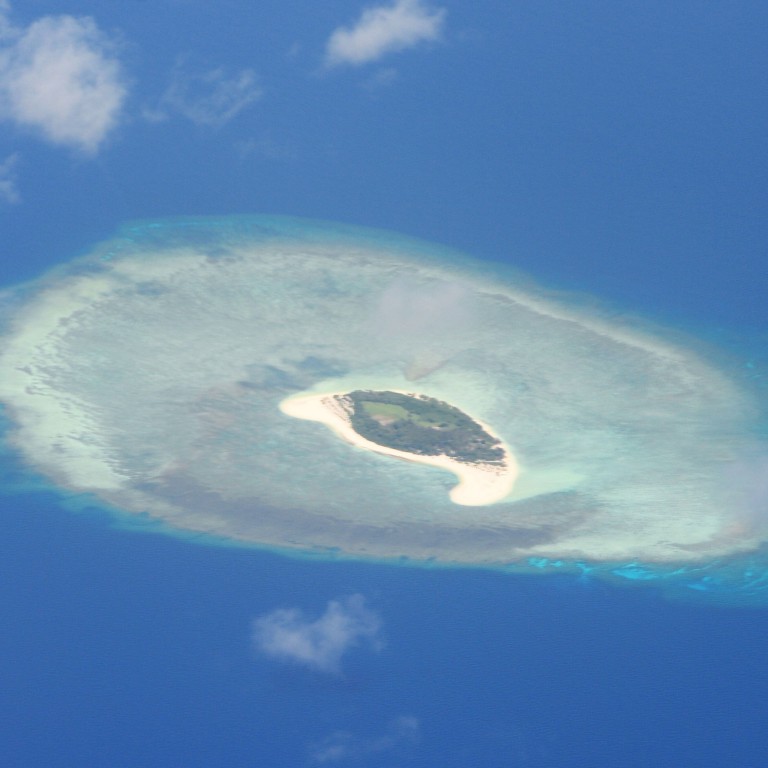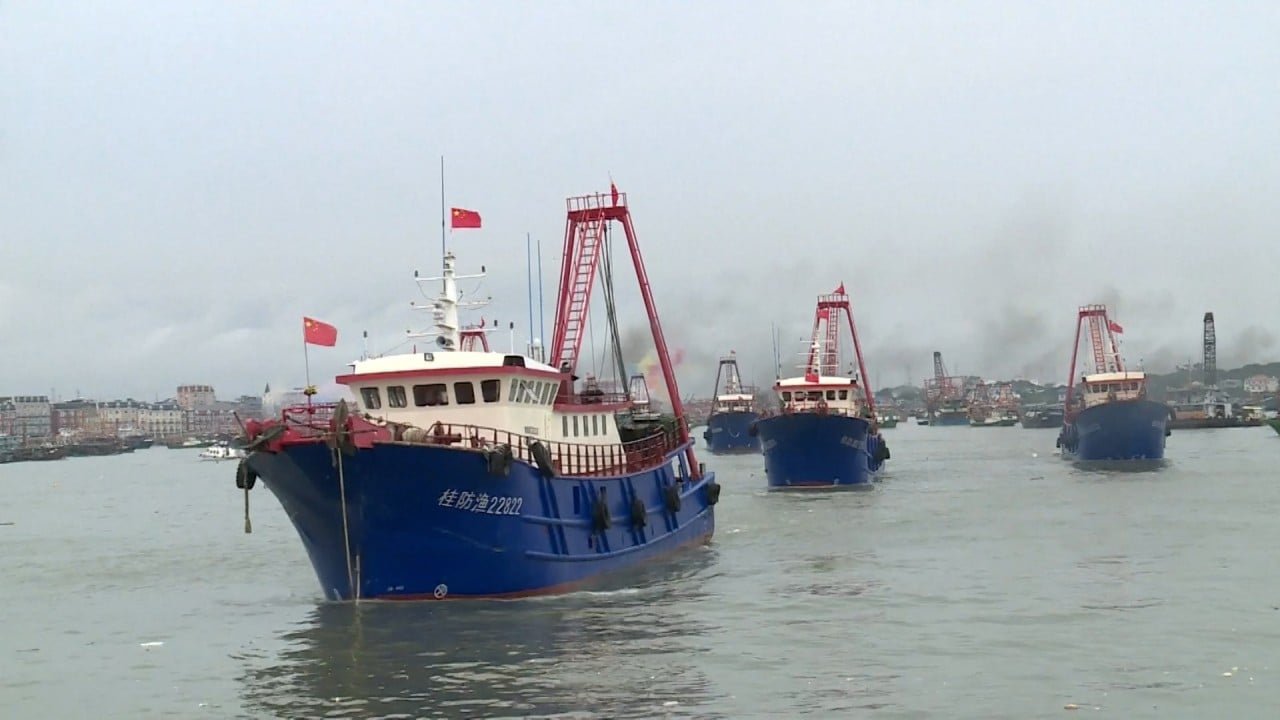
South China Sea safeguards ‘not strong enough’ to stop international tensions escalating
- Observers call for greater efforts to agree on a code of conduct for the disputed waters, which have become a major forum for the US-China rivalry
- Talks on the code between China and Asean have been going on for years, but have yet to resolve some major points of disagreement
“We have seen increasing militarisation of reclaimed features, highly publicised naval and navigation operations and more frequent incursions into disputed territories, as well as harassment of fishing and hydrocarbon extraction economic activities,” Herizal Hazri, chief executive of the Institute of Strategic and International Studies Malaysia, told a South China Sea seminar held in Sanya on the southern Chinese island of Hainan on Tuesday.
“Now, it is very clear that the existing mechanisms are becoming more likely not to be able to deal with the current challenges.”
Chinese research wharf being built near South China Sea fishing port
Since the early 1990s, Asean has established multiple partnerships and dialogues with various countries to ensure the security and stability of the South China Sea, where one third of global shipping passes through every year.
These include summits with countries such as China, Japan, Australia and the US, as well as multilateral mechanisms such as the Asean Regional Forum and the East Asia Summit.
Late last month, a US aircraft carrier strike group conducted a joint exercise in the South China Sea with a Japanese helicopter destroyer just as Asean started its annual summit.
The joint exercises were widely seen as a response to the China-Russia joint drills in the Sea of Japan, or East Sea, but some regional observers said this could be a reminder that it was time for Asean to review its security mechanisms.
“The Asean summits … have come and gone but the greatest threat to Asean and the peace and stability in the region is still there and this is the escalating US-China confrontation in the South China Sea,” said Mark Valencia, an adjunct senior scholar at the National Institute for South China Sea Studies, a think tank based in Hainan.

06:24
Explained: the history of China’s territorial disputes
While Asean has repeatedly affirmed neutrality as a principle, its members fear that they will be forced to take sides if the great power rivalry between China and the US continues to intensify.
Valencia said the group could make it clear to both China and the US that military posturing in the South China Sea was not welcome, saying: “If nothing else, this would undermine the excuse of one or the other that they are helping Southeast Asia.”
China and Asean are negotiating a code of conduct for the South China Sea that could help manage tensions and met earlier this week for their 34th round of talks after which the Chinese foreign ministry said they had discussed the draft text and made “positive progress”.
US Navy fires 2 officers for USS Connecticut submarine mishap
But the talks have yet to resolve some contentious issues, including different interpretations of the activities to be covered in the code, its legal status and geographical scope, according to Shafiah Muhibat, director of the department of international relations at the Centre for Strategic and International Studies Indonesia.
The code may also need to outline the role of extra-regional powers, particularly the US, clarify the process for other countries signing up to the code and set up a mechanism to hold signatories to account for any breaches.

01:37
Chinese fishing boats return to disputed South China Sea after summer moratorium ends
Chinese Foreign Minister Wang Yi said in August that he hoped the code could be signed next year when Cambodia took over as the chairmanship of Asean, but Muhibat said a quick conclusion may not be good news for the region.
“The lack of trust is really a concern,” Muhibat said. “It may seem that after being postponed for so long due to the pandemic, China and Asean may be desperate to resume negotiations, just for the sake of resuming negotiations, which I think is dangerous because it might not necessarily mean they will proceed on the substantive issue of the negotiation itself.”

